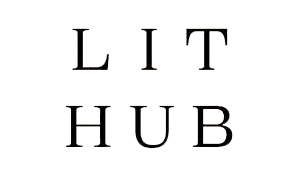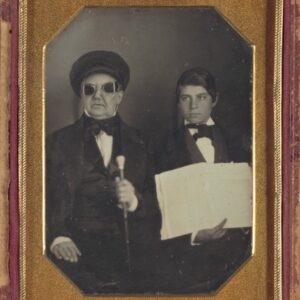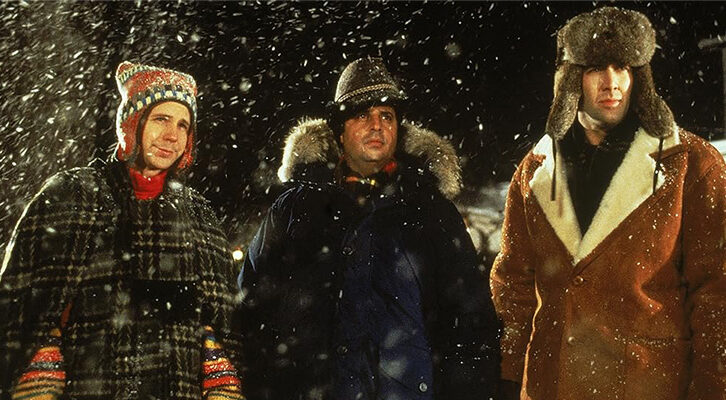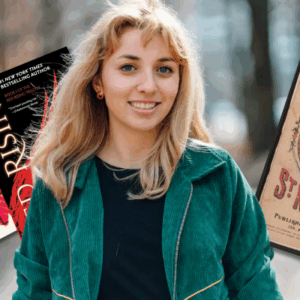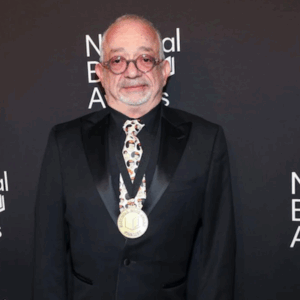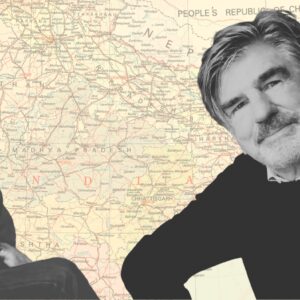
Kate Folk on Writing a Contemporary Tribute to an American Classic
Jane Ciabattari Talks to the Author of "Sky Daddy"
A first novel with a combination of heavyweight ambition, wry wit, and pathos, peppered with hilarious moments, Kate Folk’s Sky Daddy draws inspiration from Herman Melville’s Moby-Dick. Her epigram is a fitting lead-up to the novel:
“All men live enveloped in whale-lines.
–Herman Melville, Moby-Dick
Planes are the whales of the sky.
–Linda”
I asked the author why she paired a line from Melville’s classic with a comment from Linda, the narrator of Sky Daddy, and how Sky Daddy connects with Moby-Dick.
“When I began this project, I struggled to find the right voice and tone,” she explained.
My initial attempts felt overwrought and lacking in mystery. About six months into drafting, I happened to begin re-reading Moby-Dick, and was immediately charmed by the voice of Ishmael—its buoyancy and playfulness offset by passages of great profundity and lyricism. I also found thematic connections, in a way that began to feel almost spooky. Linda’s ‘white whale’ is the plane that almost ‘chose her’ when she was thirteen.
Whales and planes both contain oil, and are representations of humankind’s drive to dominate the natural world—a sort of death drive at the civilizational level. I wanted Linda to embody both Ishmael and Captain Ahab, increasingly consumed by her monomaniacal pursuit. I have heard Moby-Dick described as a vessel that allows Melville to lavish attention on whales. I wanted Sky Daddy to do the same for planes. ‘To produce a mighty book, you must choose a mighty theme,’ Melville writes. I felt that planes were certainly mighty enough.
*
Jane Ciabattari: How did you come up with the idea of a woman who develops an erotic attachment to planes? No spoilers here. You tell us about Linda’s romantic goal in the first paragraph, when she describes her “dream of marriage to a plane—what others vulgarly refer to as a ‘plane crash.’ I believed this was my destiny: for a plane to recognize me as his soulmate midflight and, overcome with passion, relinquish his grip on the sky, hurtling us to earth in a carnage that would meld our souls for eternity.”
I’ve always found planes to be charming and animal-like. I’ve been awed by their sheer power and size, their ability to traverse vast distances.
Kate Folk: I had seen documentaries about people who are attracted to objects, and conduct full-on relationships and even marriages with those objects. I thought it was a fascinating phenomenon, one that got me thinking about the nature of desire. I have been pondering whether desire is always one-sided, in a way, and if that is the source of its painful pleasure. When I was younger, I’d have crushes on people who didn’t know I existed, and I had no hope of them reciprocating my interest—in fact, that would have sort of ruined it. Is this really so different from having romantic feelings for a literal object?
Then, a friend sent me a link to a YouTube video, wherein a famous aviation disaster was recreated using some kind of flight simulation software. The processes of the crash were transcribed in eerie, stilted text on the screen. The interior of the plane was empty of people, the controls moving as if by an unseen hand. This uncanny spectacle invited me to imagine planes as sentient objects. I’ve always found planes to be charming and animal-like. I’ve been awed by their sheer power and size, their ability to traverse vast distances, and the way that boarding a flight is an act of surrender. It didn’t seem like a stretch that someone might be attracted to planes.
JC: What sort of research was involved in writing about Linda’s plane spotting with her dad, her favorite planes, the airports (SFO, Dallas), the interiors?
KF: I wrote the first draft of the novel during the pandemic shutdown. I think that there is some of my longing for flying, as a symbol of the old status quo, embedded in the novel. I mostly did research online, especially with figuring out what a particular plane’s weekly flight schedule might look like. Later on, I did the full Linda routine of taking the bus to the BART to the AirTrain to SFO. It felt subversive to be in the airport without having a flight booked, like I existed in a different dimension from the people around me. They rushed about, burdened with suitcases, with harried looks on their faces, while I wandered serenely, taking in the views.
JC: You seem to have your own fascination with contrails: “There is an uncanniness to contrails, a sense of something both familiar and alien—a cloud that seems to be imparting a message, if only we could decode it,” as you write. Where does that come from?
KF: I’ve always found contrails alluring, as I appreciate any opportunity to gawk at something in the sky. I began noticing them differently, though, while I was drafting the book. I have a flight tracking app, which I can use to view planes currently flying above me. When I see a plane above me, or hear the roar of engines, I’ll check what model it is and where it’s headed. In my neighborhood, there are often planes flying at around ten thousand feet, having just taken off from SFO. But there are other planes that have taken off from more distant airports, which I can observe only as a tiny dot at the head of the contrail. I still find aviation miraculous and just plain cool. I don’t want to lose that sense of wonder, and writing this book helped me cultivate it further.
JC: Linda’s first sexual experience with a plane is with N92823, when she is thirteen and on board with her parents and brother. When they hit turbulence she has her first surge of desire. Seventeen years later, living in San Francisco, she is still obsessed. And isolated, because she doesn’t want to divulge her proclivities. How did you develop this origin story and its ongoing effects on Linda’s life?
KF: I thought that Linda should have a lost love, a “one that got away”—a singular love object with whom she experienced a transcendent moment. She’s continued to chase that high ever since. I wanted there to be some backstory to Linda’s obsession, but I didn’t want it to feel overdetermined, neatly ascribed to a traumatic incident, or reduced to simple metaphor. To me, she has this innate connection with planes, perhaps even tied in with her destiny, as she believes. The turbulent flight with her family merely activated what had been latent in her. It’s significant that she was with her entire family on that flight, and that it occurred shortly before her parents separated. For Linda, part of the fantasy of that flight is the nostalgia for her childhood prior to the rupture—a dark notion that it might have been preferable if they had all died together that day, preserved in an idealized form.
JC: Linda works at Acuity, a tech company, as a content moderator (she’s the most efficient moderator in her vertical for the third consecutive month when we first meet her). On her breaks and after work, she pursues her obsession, streaming plane crashes, heading out to SFO to watch planes take off and land, taking regular flights on planes she finds attractive. Her obsession fuels her days. To what extent does her isolation and need for a passion mirror the experience of women today? Do the lingering aftereffects of the COVID lockdown influence this character? What else?
KF: Many of us long for adventure, a peak experience that feels like truly living. Linda only feels alive when she’s flying. She regards it as her personal religion, with its attendant rituals and ceremonies. It might also be viewed as a kind of addiction, a way of disassociating from the reality of her life. I think people do this in all kinds of ways (with the internet, for example).
I was thinking about stereotypical “masculine” vs “feminine” fiction while I was writing. If feminine fiction centers on the domestic sphere, masculine fiction involves a casting out into the unknown—Penelope tending the homestead while Odysseus goes off to war. I wanted the book to infuse that masculine sense of adventure into Linda’s story, which was another way in which Moby-Dick served as a source of inspiration.
JC: What research was involved in developing the atmosphere in Linda’s office and the details about her work in tech?
KF: I read some fascinating articles about content moderation, as well as a few books—Behind the Screen by Sarah T. Roberts, and later on, the novel We Had to Remove This Post by Hannah Bervoets. I interviewed a friend who had worked as a moderator. But most of the atmospheric elements were drawn from office jobs I’ve held before, at nonprofits and as a copywriter for a startup. I wanted Acuity to be one of these Bay Area workplaces that is trying to mimic the perks of one of a major tech company, but on a shoestring budget—hence the modest supply of Costco snacks and deflated yoga ball.
JC: Linda’s breakthrough from her isolation comes when her co-worker Karina, with whom she shares happy hour drinks and lunch at work, invites her to a quarterly Vision Board Brunch (VBB). Linda worries about how to present her vision of her dream to a group of “normal” women. This thread carries from your first page through the rest of the novel, presenting the fear of not being “normal” that haunts most of us today. Was that theme always part of your intention?
KF: At the start of the book, Linda faces a dilemma. She understands it would be unseemly to broadcast her desire to die in a plane crash upon first meeting Karina’s friends; yet she does not want to mislead the universe about her true desire, as Karina has convinced her of the vision boards’ power.
In reality, as in the book, one soon discovers that no one is normal and that feeling weird is a pretty universal human experience.
I always found this to be an interesting tension—of Linda wanting to remain true to herself and what she believes is her destiny, versus trying to “fit in.” She’s self-aware enough to know how strange her desires would seem to others. She closely observes other people so she can mimic their behavior. I have certainly felt that way myself, as if I alone am different and everyone else is “normal.” In reality, as in the book, one soon discovers that no one is normal and that feeling weird is a pretty universal human experience.
JC: Through the VBB group Linda develops a social life, and a sense of support; she also experiences rivalry, competition, and betrayal. And the dangers of keeping secrets. Friendship is not easy to write about. What helped you develop this theme?
KF: I thought a lot about how Linda’s character should develop through the novel, and particularly how her friendship with Karina would exert pressure on Linda’s obsession with planes. The nature of an obsession, or an addiction, is that it shuts out other people, and makes a person essentially selfish. I felt that Linda’s essential nature should remain constant, but I wanted her character to evolve a bit to let in other people—if only as a way of biding her time while awaiting her destiny. I wanted the other women at the VBB to feel grounded, rather than like caricatures. They are a little basic, but I find them relatable, too. Their crafting of vision boards is mostly a way of setting personal goals and connecting with each other, versus the more hardcore version of manifestation, a la The Secret, that Karina and Linda buy into. Still, I think there is a strain of literalism, a desire to believe, running beneath anyone’s attempts at manifesting. It’s like how I feel about astrology—I know it can’t be real, and yet on some level, I completely believe in it.
JC: Halfway through the novel, Linda has a meeting with Dave, a manager from the parent company. Gradually she and Dave connect, and begin taking flights together, drawing her into another taboo area, an office relationship. Was Dave always part of your plotline?
KF: The story always led me in that direction—to a relatively powerful man affiliated with Linda’s company taking an interest in Linda, complicating her efforts to quarantine her plane obsession from her work life. Dave objectifies Linda the way she objectifies planes. He sees her as a quirky younger female coworker, a kind of manic pixie dream girl who gets horny on planes. Of course, Linda is also using Dave, viewing him as merely an “appendage to his American Express card.” It’s poignant how Linda and Dave develop a genuine friendship in spite of their very different motivations. They are two lonely people passing time together, as Linda observes.
JC: What are you working on now/next?
KF: I’m working on a novel in a completely different vein. It’s set in the early 1990s, in Fort Dodge, Iowa, and is written from the perspective of an insurance salesman named Arnold. It’s a suburban noir novel about the fantasies we project upon one another, and the dangers of nostalgia.
__________________________________

Sky Daddy by Kate Folk is available from Random House, a division of Penguin Random House, LLC.
Jane Ciabattari
Jane Ciabattari, author of the short story collection Stealing the Fire, is a former National Book Critics Circle president (and current NBCC vice president/events), and a member of the Writers Grotto. Her reviews, interviews and cultural criticism have appeared in NPR, BBC Culture, the New York Times Book Review, the Guardian, Bookforum, Paris Review, the Washington Post, Boston Globe, and the Los Angeles Times, among other publications.








